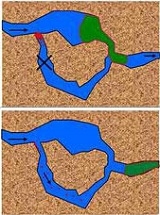- Home page /
- New technologies and equipment /
- Nanoparticle-based technology helps recover more oil
Nanoparticle-based technology helps recover more oil

The petroleum industry and research community have been working for decades on various solutions to increase recovery rates. One group of researchers at the Centre for Integrated Petroleum Research (CIPR) in Bergen, collaborating with researchers in China, has developed a new method for recovering more oil from wells.
The Chinese scientists had already succeeded in recovering a sensational 15% of the residual oil in their test reservoir when they formed a collaboration with the CIPR researchers to find out what had actually taken place down in the reservoir. Now the Norwegian partner in the collaboration has succeeded in recovering up to 50% of the oil remaining in North Sea rock samples.
To achieve these high recovery rates, the researchers make use of a simple physical phenomenon. Water in an oil reservoir flows much like the water in a river, accelerating in narrow stretches and slowing where the path widens. When water is pumped into a reservoir, the pressure difference forces the water away from the injection well and towards the production well through the tiny rock pores. These pores are all interconnected by very narrow tunnel-like passages, and the water accelerates as it squeezes its way through these.
The new method is based on infusing the injection water with particles that are considerably smaller than the tunnel diameters. When the particle-enhanced water reaches a tunnel opening, it will accelerate faster than the particles, leaving the particles behind to accumulate and plug the tunnel entrance, ultimately sealing the tunnel.
This forces the following water to take other paths through the rock’s pores and passages – and in some of these there is oil, which is forced out with the water flow. The result is more oil extracted from the production well and higher profits for the petroleum companies.

